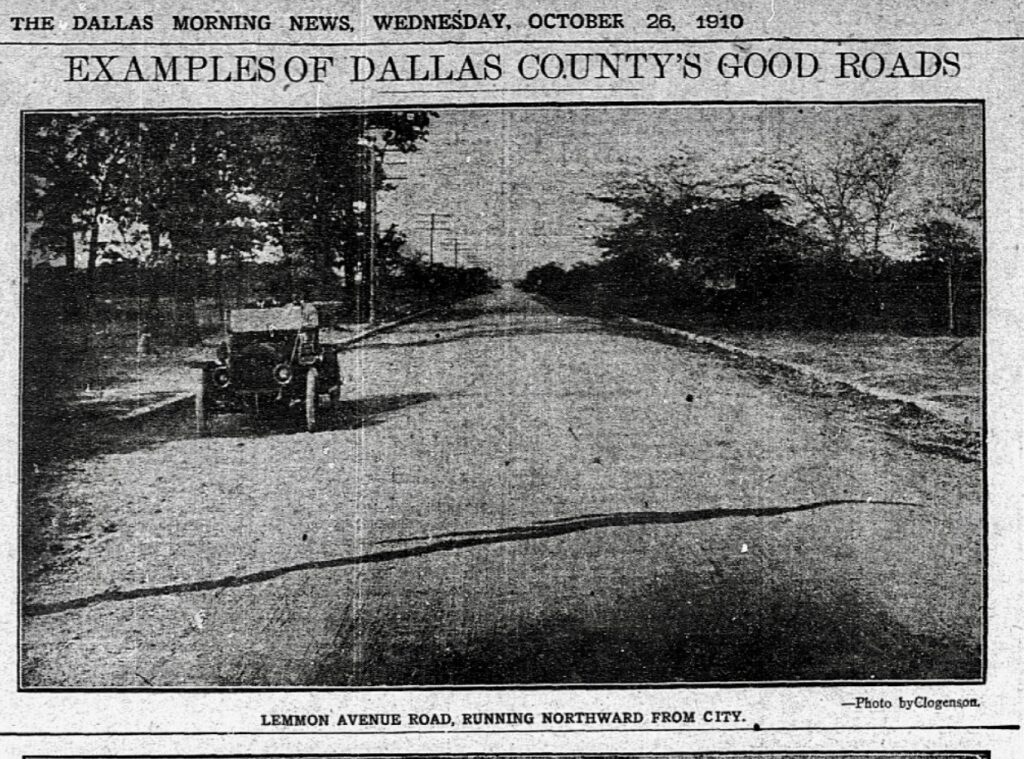
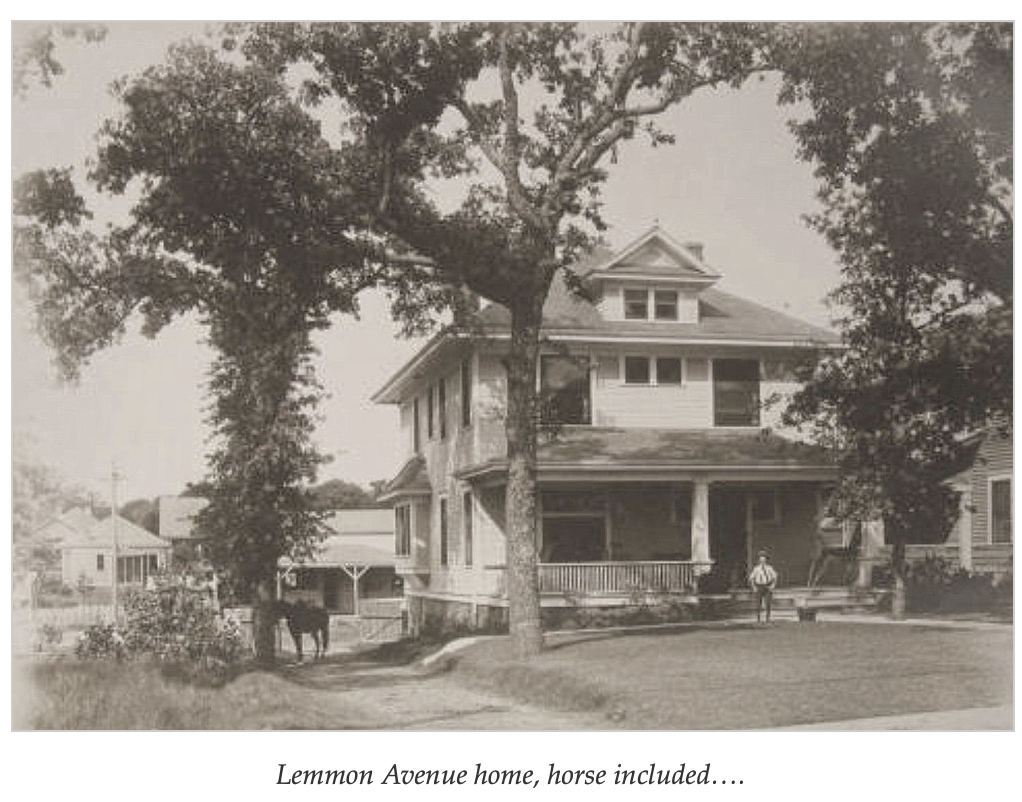
As Perry Heights developed house by house in the 1920s, Lemmon Avenue was the address of some of the grandest homes in the city. Prominent houses and trees lined the avenue from Downtown to Lomo Alto Drive.
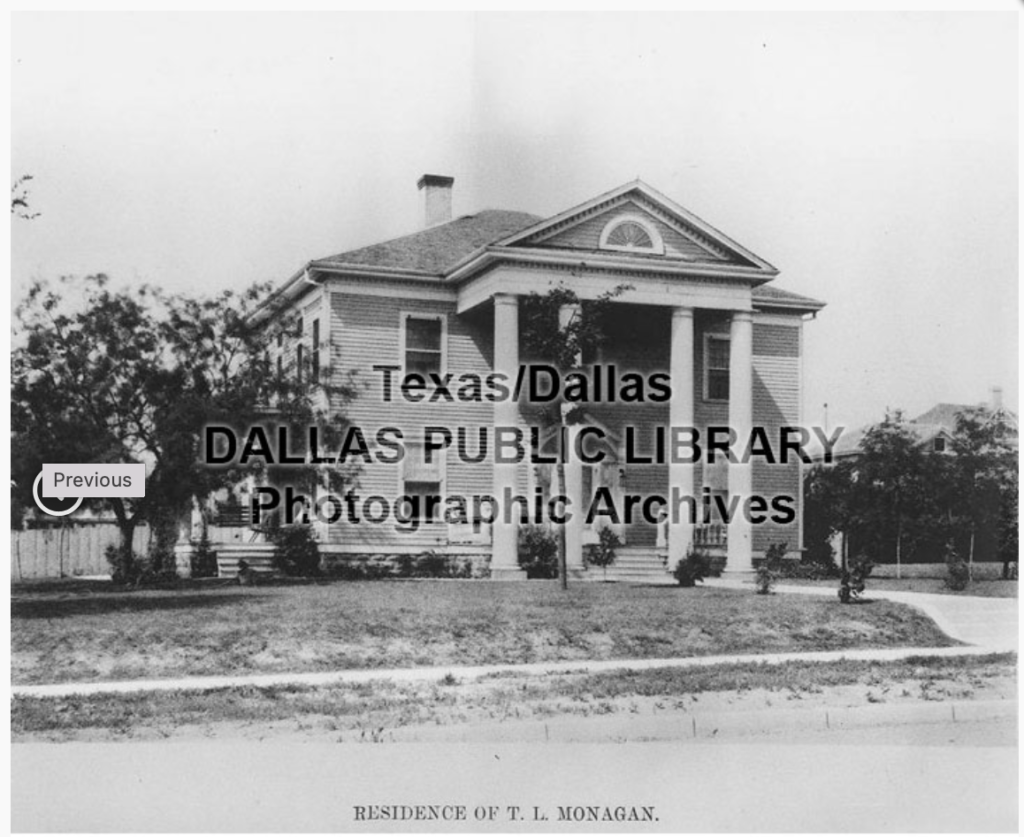
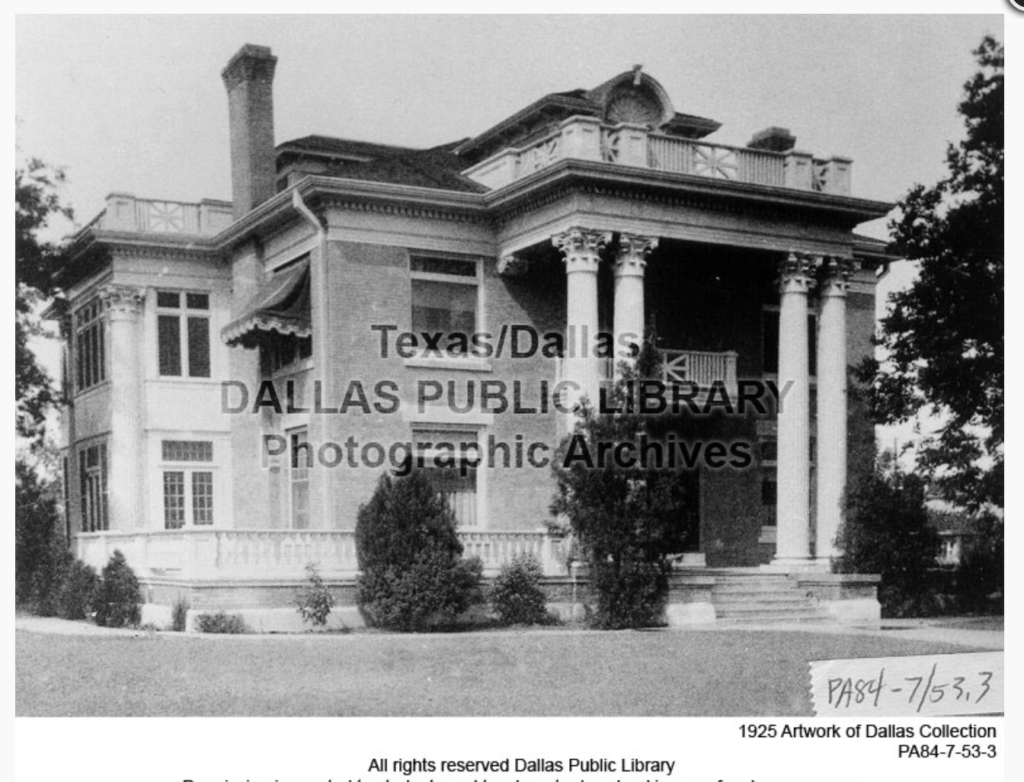
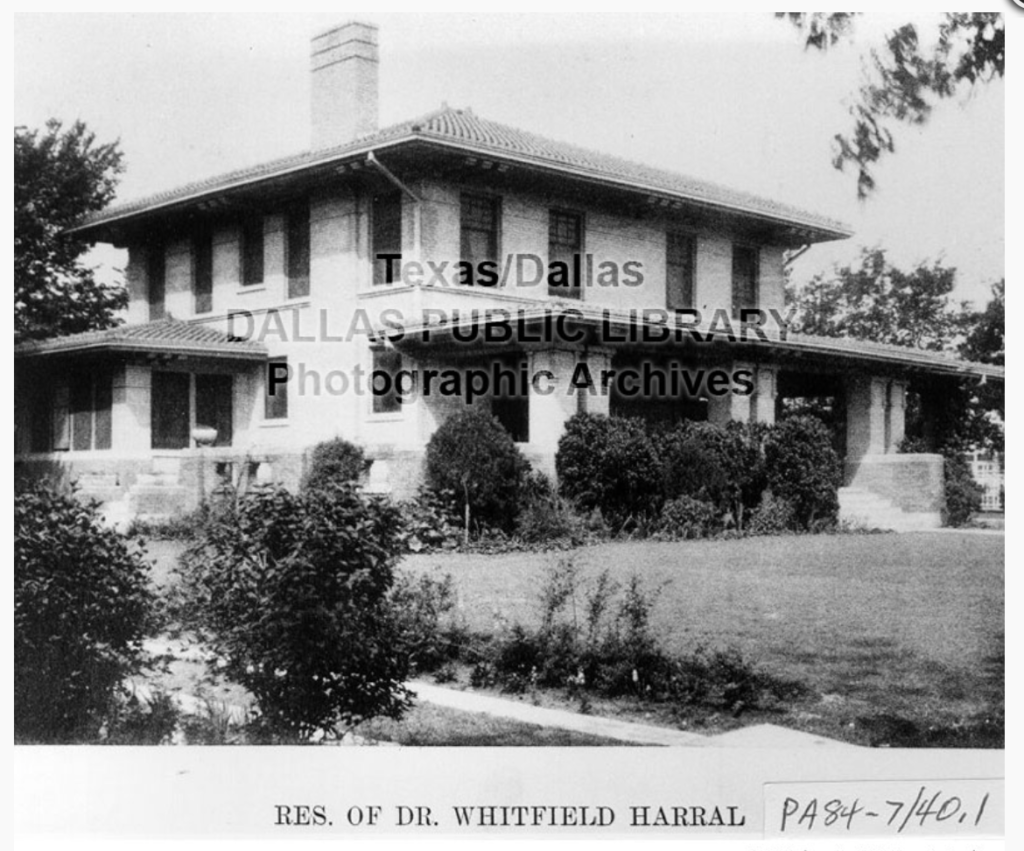
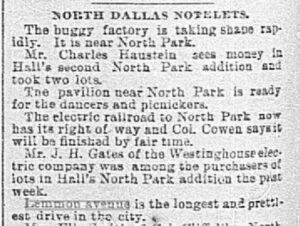
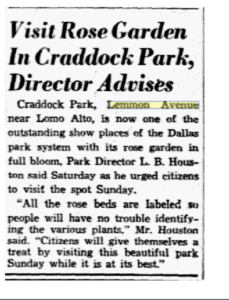
Lemmon Ave. was named after William H. Lemmon who was a Confederate captain turned real estate developer in Oak Lawn. He lived at the intersection of Lemmon Ave. and Cole St. Along with Oliver Bowser, he is credited with developing what is now known as Turtle Creek Park. Lemmon, one of Dallas’ first paved streets, was considered a beautiful, long drive from the city. With the rise of automobiles, people drove on Lemmon to not only Oak Lawn Park (currently Turtle Creek Park), but to the Country Club at Lemmon and Walnut Hill Lane to play golf and tennis. There was also Love Field military base, which the City of Dallas purchased in 1927, to watch the small planes take off and land. In 1930, just opposite Love Field, a polo field was opened called the Dallas Polo Association, where matches were held through the 1940s . Craddock Park also had a rose garden that was an attraction in the 1930s.
The late 1940s and 1950s saw more traffic along Lemmon Ave. and the first “suburban retail strip center” at Lomo Alto that was built in 1939. By then, Love Field tripled in size and was flying passenger planes. Lemmon Ave. was the most common route to and from the airport. Even President Kennedy made his way along Lemmon Ave. from Love Field to Downtown Dallas for the parade in his honor on that November day in 1963. Increasing pressure from developers to change the residential zoning to commercial was felt as Lemmon Ave. was widened. Exceptions to the residential zoning began to appear. Moore’s Grocery and later Simon David Grocery were built at the corner of Wycliff Ave. and Lemmon Ave. while small businesses rose beyond the train track bridge on Lemmon Ave. These included Prince’s Hamburgers, BBQ joints and filling stations. Once the city made the decision to change the zoning to commercial, some businesses purchased the older homes and converted them to bars, restaurants, and stores. Others were torn down to create new mid century modern buildings such as Chantly’s Sea Food Restaurant at Lemmon Ave. and Throckmorton St.
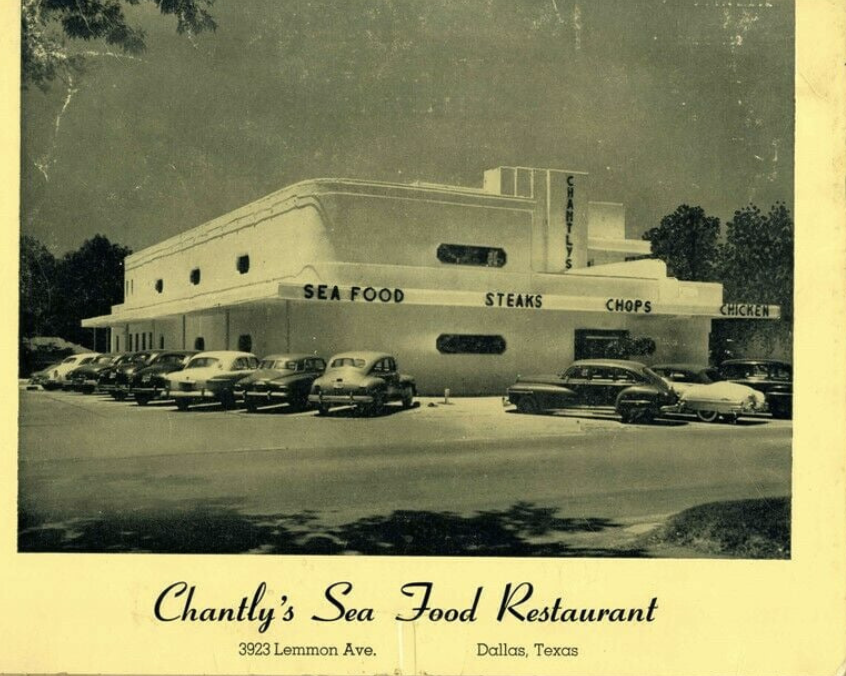
The 1960s through the 1980s saw the explosion of franchises along Lemmon Ave. Every fast food establishment wanted the temptation of a drive thru on Lemmon Ave. as more and more of the old homes were demolished. The few still standing became art galleries and second hand shops. In the 1960s the stretch of Lemmon Ave. between Oaklawn Ave. and Wycliff Ave. became known as “Gallery Row”. In the 1970s many of those shops became low quality resale shops and eventually were demolished. A few of the homes became popular live music clubs and restaurants such as Machine Gun Kelly’s, Mother Blues, Gerties, and Mother Pearl’s. Signage along Lemmon became excessive enough to have the city adopt a sign ordinance to reduce the “visual pollution”.
The last standing single family house along Lemmon Ave. was at 3922. It was built in 1915 and occupied by Shelby and Julia Gibson and, later, their children until 1964. After a few businesses inhabited the house, it was finally demolished in 2013.


While the last forty years have seen some improvements to Lemmon Ave., much of it is still in need of urban renewal. Groups such as the Oak Lawn Committee are actively working to make it a more attractive, walkable urban avenue in keeping with the intent of the area’s zoning overlay, PD 193.

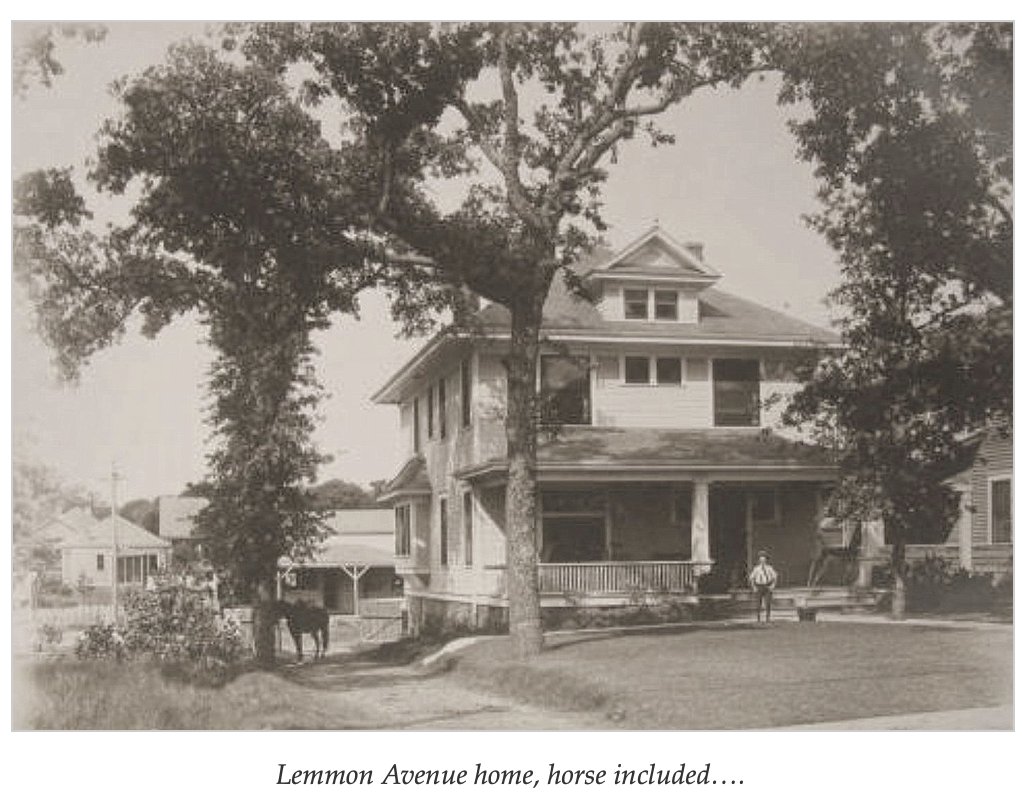
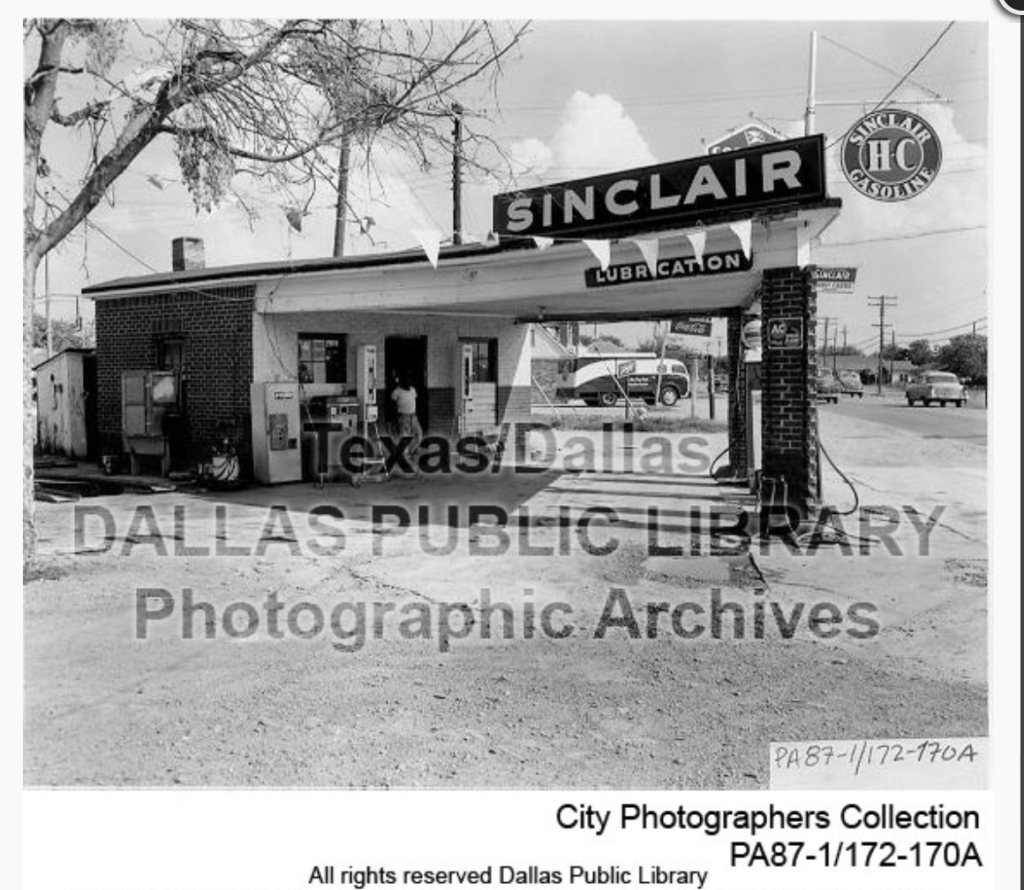
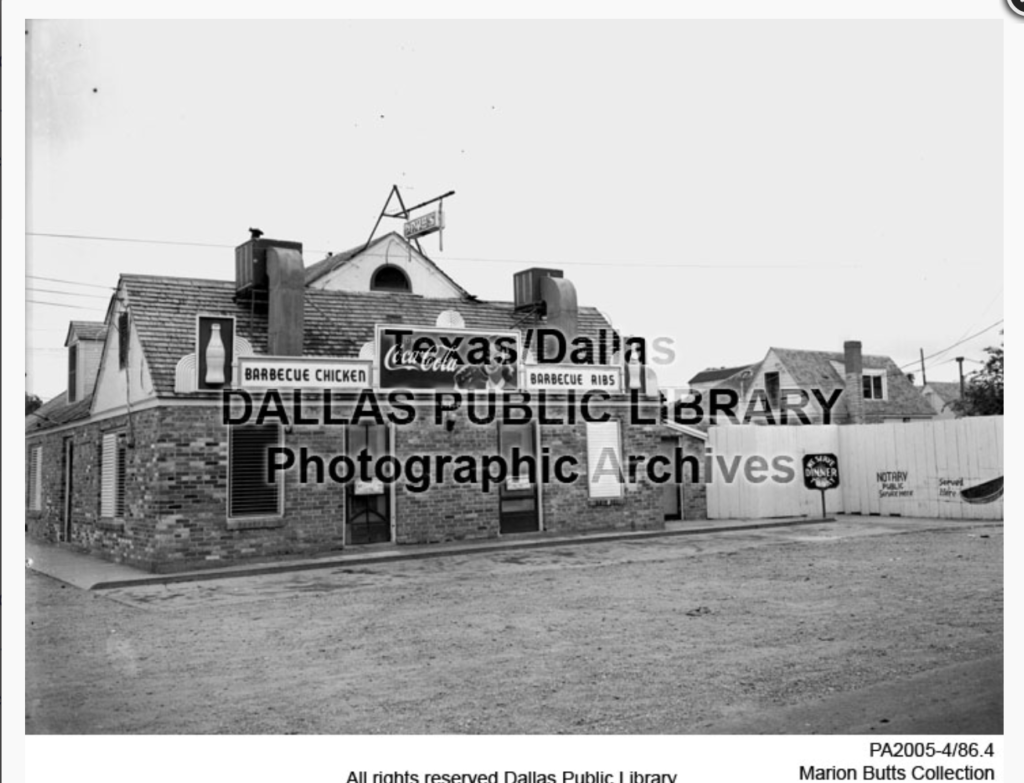
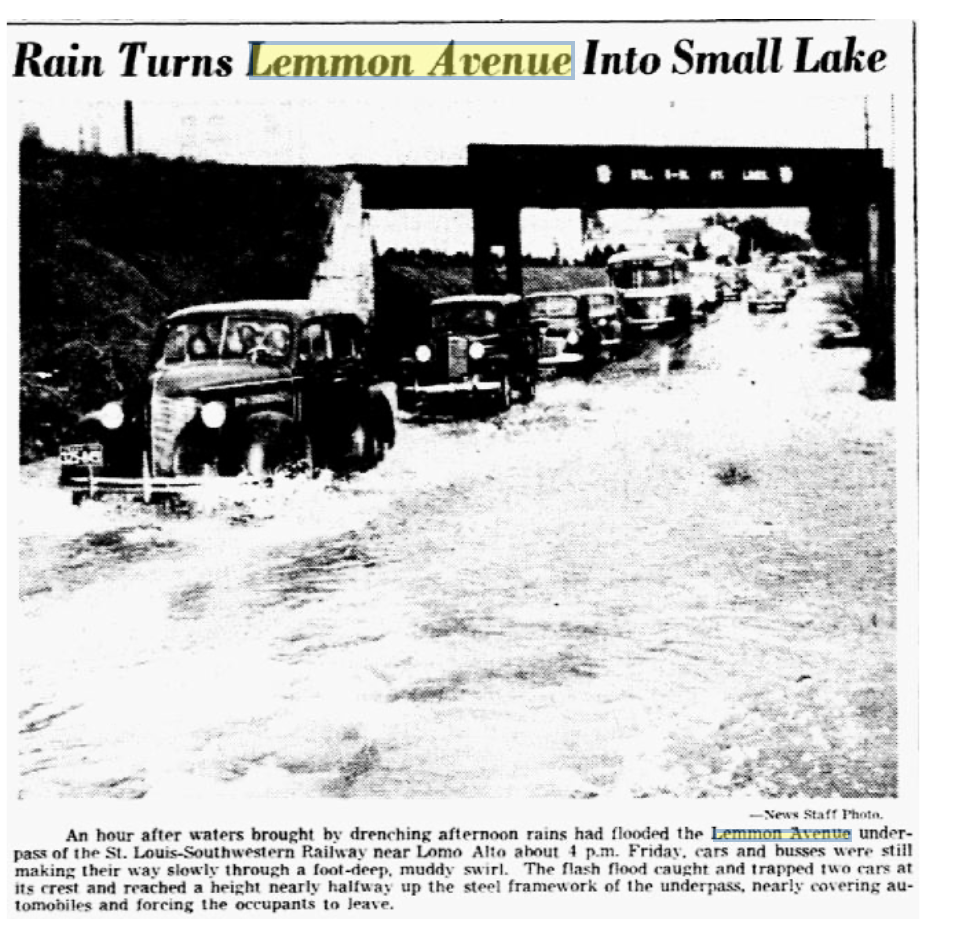
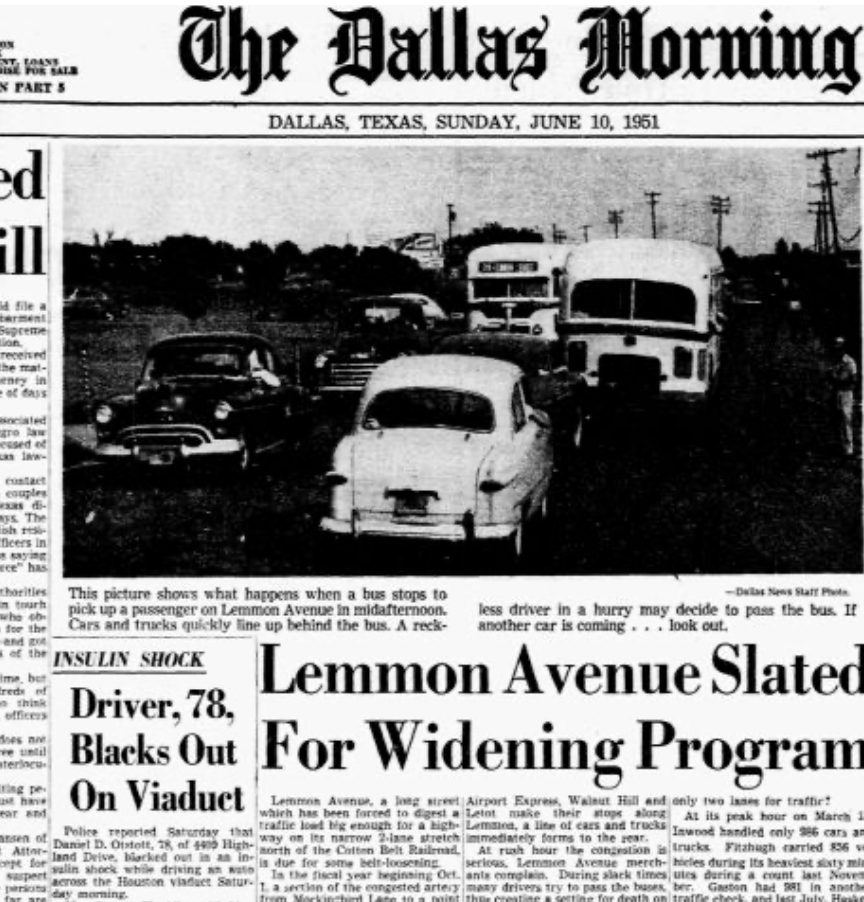
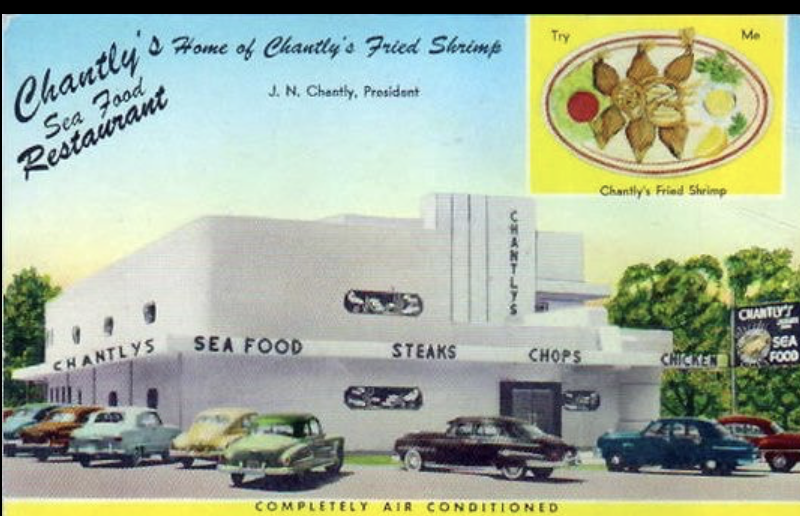
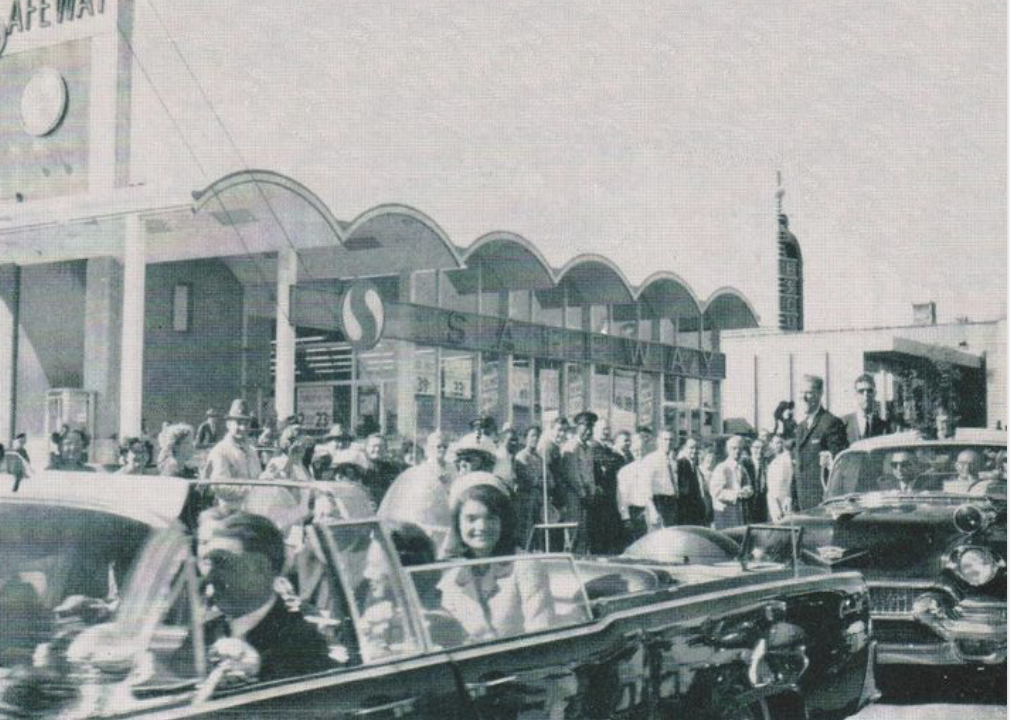
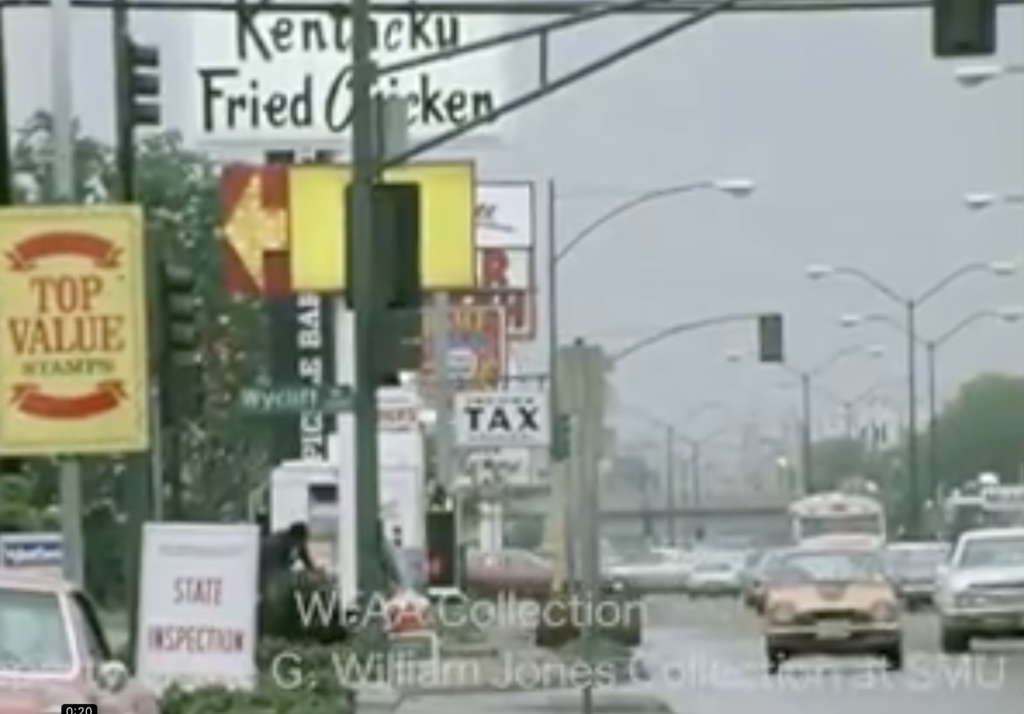
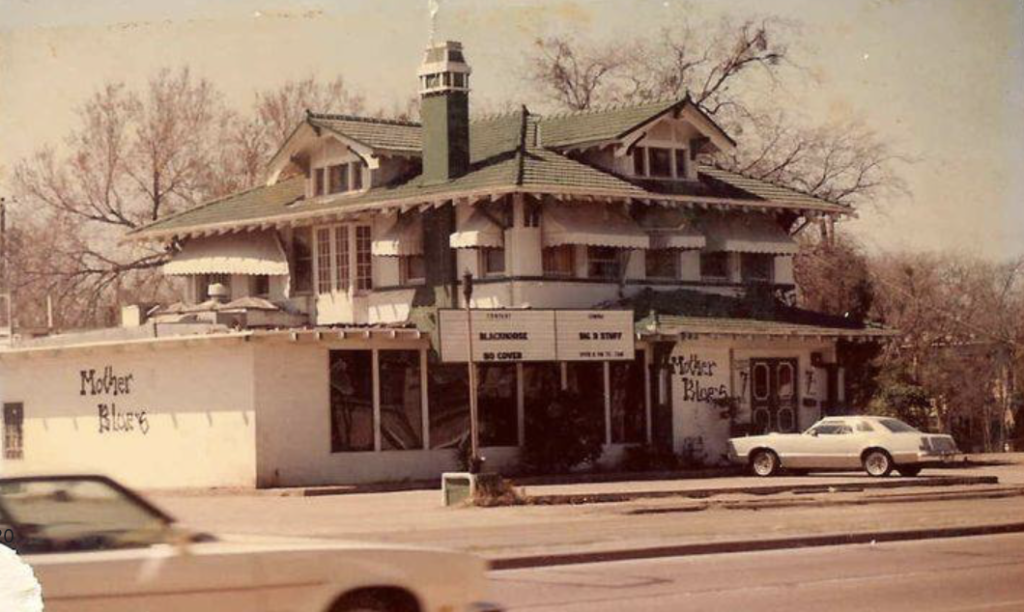
I’ve lived in
Oak Lawn since 1987. I remember two of the
original homes still left on Lemmon Ave. One on the
corner of Lemmon and Throckmorton, and one next to the old
Taco Bueno. Thank you for sharing. Love the history.